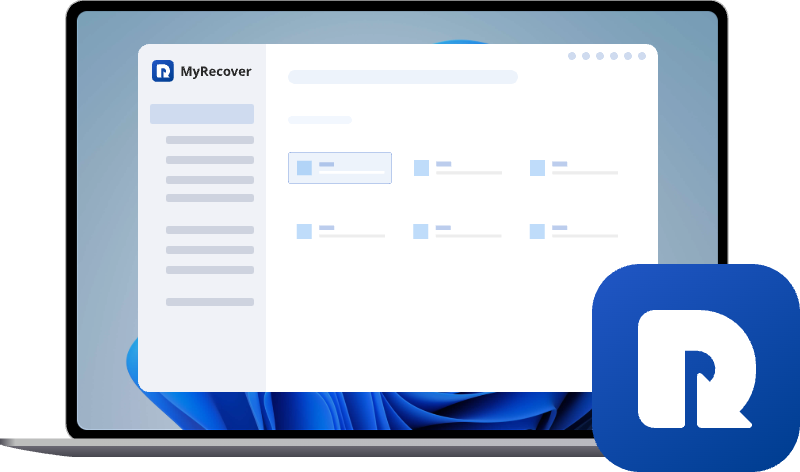Fix File System Error: A Complete Troubleshooting Guide
Encountering a persistent file system error, particularly file system error 2147416359, can halt your work. Our article details the root causes and offers a structured approach to fix it, covering solutions from Windows Update troubleshooting to system file repair and permission resets for a lasting fix.
How to Fix A File System Error?
File system error on Windows 10
I can't open any pictures on my computer this morning. When I do, it's showing "file system error" and some numbers in brackets. How can I fix this, and why is it happening? Watched some YouTube videos about it & tried, but didn't work :/
- Question from reddit.com
When a file system error pops up, it means that your computer is having trouble reading or writing data to your storage drive. This communication breakdown prevents Windows from completing a task you've asked it to do, whether it's opening a file, saving a document, or updating a program. It's less about a single "thing" being broken and more about a failure in the process of accessing your data.
This guide will not only demystify these annoying messages but also provide a comprehensive toolkit to fix them for good and, crucially, show you how to recover any files that might get caught in the crossfire.
Common File System Error Codes and Their Meanings
When you get a "file system error" message, Windows often provides a specific numerical code that gives us a vital clue about the root cause. We listed the common file system errors.
File System Error 2147416359
This pesky code is a frequent flyer and is almost exclusively tied to the Windows Update service. It typically indicates a conflict or a failure in the background processes that handle downloading and installing updates. When the update mechanism tries to access or modify system files and can't, it throws this file system error 2147416359 as a white flag.
File System Error 2147163901
Another code often linked to system integrity, this one can pop up during various operations, including application installations or system repairs. It often points towards permission issues or corrupted components within the Windows module store, a core part of the operating system's structure.
File System Error 1073741819
This is a more general system stability code, sometimes related to memory management or application conflicts. While not always a direct file system error in the storage sense, it manifests similarly when an application cannot properly access the resources it needs from the system.
File System Error 2147219196
This error code strongly indicates a corruption within the Windows Component Store (also known as the WinSxS folder). The Component Store is a crucial part of Windows that holds the core files needed for your system and applications to run correctly. When you see this error, it means a system process (like installing a Store app or a system update) has tried to access a necessary file and found it to be missing, unreadable, or damaged.
File System Error 2147219200
This is very closely related to error 2147219196 and also points directly to a failure in the Windows Component Store. The specific sub-code often relates to an issue with "resource" files or a failure to commit a transaction during an app installation or update. In essence, the system began a process to modify or add files to the component store but could not complete it successfully, leaving the operation in an incomplete state.
File System Error 2015294522
This error code is another variant that falls into the same family. It often occurs during deployment operations, which are the processes Windows uses to install, modify, or repair apps and features. This error suggests that the deployment engine encountered a critical problem when trying to read from or write to the system's file structure, likely due to a mismatch between expected and actual file states in the Component Store.
What Triggers the File System Error in Windows 11/10?
There are multiple reasons should are responsible for the file system error, check them:
⭕ Windows Component Store Corruption: A damaged WinSxS folder, crucial for system operations and app installations.
⭕ Failing Storage Drive: Bad sectors or general degradation on an HDD or SSD.
⭕ Faulty Drivers or Software: Buggy applications or incorrect storage drivers.
⭕ Connection Issues: Loose or damaged data cables (SATA/USB) connecting the drive.
⭕ Permission Problems: Incorrect file/folder access rights preventing Windows from reading data.
⭕ Hardware Problems: Faulty RAM or an unstable Power Supply Unit (PSU) corrupting data during transfer.
Fix File System Errors on Windows 11/10 in 12 Ways
To solve the file system errors in Windows 11 or Windows 10 computers, try the following solutions.
Way 1. Verify System Drive Integrity
A quick check on your main drive's health can rule out major hardware failures.
You can use Windows' built-in "Check Disk" utility to troubleshoot:
1. Right-clicking your C: drive, selecting 'Properties'.
2. Navigating to the 'Tools' tab and clicking 'Check'.
This will scan for basic file system inconsistencies.
Way 2. Check Available Disk Space on System Drive
It sounds almost too simple, but a nearly full drive can cause a multitude of strange issues, including various file system errors. Windows needs free space to operate properly, for temporary files, virtual memory, and other operations. Ensure you have at least 10-15% of your total drive capacity free.
Way 3. Run DISM
For the most effective system repair, you should run the Deployment Image Servicing and Management (DISM) tool before using the System File Checker. DISM downloads and replaces corrupted system files from a clean source, creating a healthy foundation for subsequent repairs.
To run DISM:
1. Open Command Prompt as an administrator. To do this, type "cmd" in the Windows Search box, right-click "Command Prompt" in the results, and select "Run as administrator".
2. In the Command Prompt window, type the following command and press Enter:
DISM /Online /Cleanup-image /Restorehealth
3. Allow the process to complete, as this may take several minutes.
Important Note: By default, DISM uses Windows Update to source the required files. If the Windows Update service is malfunctioning, you can specify an alternative source, such as a Windows installation DVD or a folder containing the Windows files. Use this command structure instead, replacing the path with your source location:
DISM /Online /Cleanup-Image /RestoreHealth /Source:C:\RepairSource\Windows /LimitAccess
Way 4.Run System File Checker
To scan and repair your system files, execute the System File Checker utility. With the Administrator Command Prompt open, type the following command and press Enter:
sfc /scannow
A window will appear confirming that the system scan has begun. You can close the Command Prompt window until the verification reaches 100%.
This process will examine all protected system files and automatically replace any that are corrupted with a cached, correct version. Once the scan finishes, you will see one of several result messages detailing the outcome.
Way 5. Run the Windows Update Troubleshooter
Windows has a handy built-in tool designed to find and fix problems with updates automatically. Go to Settings > Update & Security > Troubleshoot > Additional troubleshooters, and run the "Windows Update" troubleshooter.
It's a great first line of attack.
Way 6. Perform a Clean Boot
Sometimes, the issue isn't with Windows itself but with a third-party program or service that conflicts with the update process. Performing a "Clean Boot" starts Windows with a minimal set of drivers and startup programs. If the file system error disappears in this state, you can systematically re-enable services to pinpoint the conflicting software.
While we've tackled one of the most common codes, numerous others can appear, each with its own nuances that may require a slightly different approach.
Way 7. Update System Drivers to the Latest Version
The File System Error 2147219196 can often be resolved by ensuring all your system drivers, especially chipset and storage controllers, are up to date.
A visit to your PC manufacturer's support website or the device manufacturer's site (like Intel or AMD) to get the latest drivers can often clear this right up.
Way 8. Reinstall Problematic Software
Encountering a file system error 2018374635 often points to issues with specific applications or their installation paths. Try uninstalling and reinstalling the application that triggered the error. Running the installer as an administrator can also circumvent permission-related causes.
Way 9. Create A Temporary Profile
Similarly, a file system error 536606512 may relate to corruption within a user profile or specific application data. To eliminate permission-related issues, creating a new administrator account is an effective step. This ensures you have full access to all system settings without encountering restrictions.
To create a new administrator account:
1. Right-click the Start button and select Settings.
2. Navigate to Accounts and then select Other users.
3. Click Add account.
4. On the following screen, select I don't have this person's sign-in information.
5. Choose Add a user without a Microsoft account.
6. Enter a username and an optional (but recommended) password, then click Next.
7. The new account will appear. Click on its entry, then select Change account type.
8. Change the account type from "Standard User" to Administrator and click OK.
Way 10. Run CHKDSK
The Check Disk utility, or CHKDSK, is a powerful tool that scans the physical structure of your drive. To run a thorough scan that fixes errors, open an elevated Command Prompt and type chkdsk g: /f /r (replacing g: with the relevant drive letter if needed).
You'll be prompted to schedule the scan for the next reboot, as it requires exclusive access to the drive. This process can take a long time, but it can repair bad sectors and other file system corruption.
Way 11. Run the Windows Store App Troubleshooter
Windows includes dedicated troubleshooters to automatically diagnose and fix common problems. If you are experiencing a file system error related to applications, running the Windows Store Apps troubleshooter can often resolve it.
To run the Windows Store Apps troubleshooter:
1. Right-click the Start button and select Settings.
2. Navigate to System and then select Troubleshoot.
3. Click Other troubleshooters.
4. Locate Windows Store Apps in the list and click the Run button next to it.
5. Follow the on-screen instructions to complete the diagnostic and repair process.
Way 12. Reset Windows Update Components
If you're still battling update-related errors, you can manually reset the entire Windows Update ecosystem. This involves stopping related services, renaming the SoftwareDistribution and Catroot2 folders (which cache update files), and then restarting the services. This gives Windows a clean slate to redownload all update components from scratch.
Of course, the most nerve-wracking part of any system error is the potential for data loss. Before, during, or after these repairs, you might find a file is missing or corrupted. This is where a reliable recovery tool becomes essential.
Fast Recover Your Files with MyRecover
Even after you've successfully fixed the underlying file system error, you might discover that some of your precious files have gone missing or become inaccessible. Perhaps they were casualties of the corruption, or maybe a repair operation inadvertently affected them.
Whatever the reason, don't panic. This is where a robust data recovery tool like MyRecover comes to the rescue. MyRecover is designed to deeply scan your storage drives and recover a wide array of file types, even from formatted or corrupted partitions.
1. Download and install MyRecover on your Windows 11/10 computer.
2. Launch MyRecover, tap Deleted Files Recovery, choose the drive where the files were located before, and hit Scan.
3. Hit OK when the scanning is finished.
4. Preview and choose the files, and press Recover.
5. Choose a location to save these recovered files safely.
- Tips:✎...
- Now, you can go to the destination folder to check these files.
- You can also recover unlimited files if you have lost a large number of files.
- For an administrator of an organization, you can recover files from unlimited computers with MyRecover Technician.

- Recover Deleted Files Easily with Simple Clicks
- 1000+ File Formats Supported
- Support HDD, SSD, External Hard Drive, USB Drive, SD Card, etc.
- Quickly Find Files Using File Types, Name, Size, etc.
- Preview Files Before Recovering
- Recover Unlimited Data
FAQs about File System Error
Q: What is the most common cause of a file system error?
A: The most common cause is corruption of Windows system files or the component store. This is often due to interrupted updates, sudden power loss, or improper shutdowns. Failing storage drives or corrupted user profiles are also frequent culprits.
Q: How can I fix a file system error without losing my data?
A: Most standard fixes like SFC and DISM are non-destructive and target system files, not your personal data. However, always back up your files first. If data is already lost, use a recovery tool like MyRecover before running intensive repairs like CHKDSK.
Q: Is a file system error a sign that my hard drive is failing?
A: It can be. If errors are persistent and accompanied by slow performance, strange noises, or random file corruption, suspect hardware failure. Use CHKDSK or manufacturer tools to check the drive's health and replace it if necessary.
Q: Can a virus cause a file system error?
A: Yes. Malware often corrupts or encrypts system files, triggering these errors. Run a full antivirus scan, then use system repair tools like SFC and DISM to fix the damage.
Q: I keep getting 'file system error 1073741819' when using a specific app. What should I do?
A: This is typically an app-specific issue. Fully uninstall the application, restart your PC, and then reinstall the latest version from the official source, ensuring you run the installer as an administrator.


